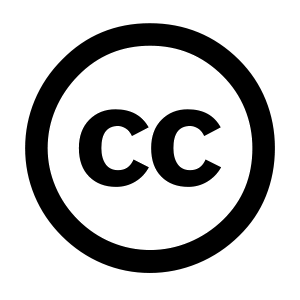Some Rights Reserved: A Brief Introduction to the Creative Commons

People have long recognized the potential of the internet and computing technology to advance the arts and sciences and to increase access to education and learning. But the fruition of this potential is neither guaranteed nor implanted in the technology itself (Rosenzweig 2011); it will take the efforts of dedicated people and institutions to make the internet into a home for 'the free and open exchange of ideas.' By creating a copyright scheme that allows for greater sharing, and by promoting open education, Creative Commons is one institution working to achieve this goal.
Since its founding in 2001 under the leadership of Harvard Law Professor Lawrence Lessig (then at Stanford), the non-profit organization Creative Commons has been developing a new model of copyright that fosters more sharing and cooperation among writers, authors, and others. Its founders were dissatisfied with the ‘all rights reserved’ default copyright mode for creative works, which they saw as overly-restrictive and not conducive to the advancement of art and knowledge. Thinking that there were many people who would want their creative works to be more easily shared, they built a copyright framework under the principle 'some rights reserved,' and they designed it to be flexible, usable by the artists, authors, and inventors themselves, and consistent with copyright law. This is the Creative Commons.
Principles of the Creative Commons
Central to the project is the principle that innovation and creativity are fostered by the open and free exchange of ideas. Creative Commons therefore advocates the development of an intellectual and artistic community—that is, a 'Commons'—where those who wish to share their works can do so easily, and where those who wish to build upon the works of others can readily locate free and open resources. In a press release dated May 16, 2002, Berkeley Law Professor Molly Van Houweling, who was then Executive Director of the Creative Commons project, put it this way: “The aim ... is not only to increase the sum of raw source material online, but also to make access to that material cheaper and easier” (see http://web.archive.org/web/20020803084257/http://www.creativecommons.org/news/may16).
However, it was clear that artists, writers, and others would not necessarily want to give up all rights to their own creative works, so there needed to be some compromise between highly restricted “all rights reserved” and completely unrestricted (i.e. public domain) forms of copyright. For this reason, the Creative Commons developed its “Some Rights Reserved” principle, where one may select or customize the copyrights for a work based upon certain areas of restriction.
Types of Licenses
There are six main types of Creative Commons licenses, all of which require ‘Attribution’—that is, the creator of a work must be given credit whenever that work is used. Further restrictions may include 'NoDerivs,' meaning that the work can be shared but not altered; 'ShareAlike,' which stipulates that copies and derivative works must be licensed under the same copyright as the original; and 'NonCommercial,' which states that copies and derivative works cannot be used for commercial purposes (http://creativecommons.org/licenses/). All Creative Commons licenses are made from some combination of those restrictions.
Each Creative Commons license includes three layers of information: the legal code, a description for the layperson, and a machine-readable layer. This approach is intended to make a work more accessible in two ways. First, the layperson’s description makes the license intelligible to non-lawyers who want to understand how they are allowed to share or reuse a given creative work. (For example, an author who wishes to use a painting as the cover of a novel.) Second, the machine-readable layer makes it easier for people to search the internet for works that are available under the various types of Creative Commons licenses. Thus, through their flexibility, and by making creative works more accessible, Creative Commons licenses are designed to foster creativity and innovation.
Some Projects with Creative Commons Licenses
- Wikipedia.org
- MIT Open Courseware http://ocw.mit.edu/index.htm
- Open Yale Courses http://oyc.yale.edu/
- Digital Humanities Quarterly http://www.digitalhumanities.org/dhq/
The Open Education Movement
Also, Creative Commons has been active in promoting open education, a movement that seeks to use new technology to increase access to education, especially among communities with few resources. This year, in collaboration with the U.S. Department of Education and the Open Society Foundations, they held a video competition with prizes awarded to the three videos which were judged to best promote the ideals of Open Education (see http://whyopenedmatters.org/index.html). The first prize video is shown here:
By promoting the sharing of ideas and open education, the Creative Commons organization endeavors to foster innovation and creativity in art and education, and to realize the democratic potential of the web.
Scott Paul McGinnis is a Graduate Student Researcher at the Townsend Center for the Humanities.